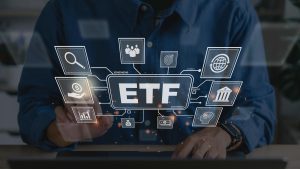Inflation has cooled from its pandemic-era peak, but for many middle-class Americans, the economic pressure hasn’t fully eased. While wages have grown, the increase often fails to match the cost of living. The purchasing power of the middle class remains strained, reflecting a persistent imbalance between income and expenses that affects everything from groceries to housing.
Many households that once felt financially comfortable are now facing difficult trade-offs. Rising costs in essentials—such as healthcare, education, and rent—erode the real value of income. Even with moderate inflation rates in 2025, the purchasing power of the average family continues to shrink, challenging the promise of financial stability once associated with middle-class life.
The Lingering Effects of Inflation on Everyday Expenses

Though inflation has technically slowed, its cumulative impact remains significant. Prices that surged between 2021 and 2023 did not revert; instead, they plateaued at higher levels. This means that while inflation growth is steadier, the baseline for goods and services has permanently shifted. As a result, purchasing power continues to weaken, leaving families feeling poorer even when their paychecks appear larger on paper.
For instance, grocery prices have risen more than 25% compared to pre-pandemic levels. Rent and mortgage costs remain steep due to limited housing supply. Transportation, another major household expense, has also climbed with higher car insurance and maintenance costs. Together, these factors chip away at the purchasing power that defines middle-class comfort.
Wages Are Rising, but Not Fast Enough
Why Income Growth Doesn’t Guarantee Relief
Wages have increased across many sectors, but the pace fails to match long-term inflation. In 2025, average salaries are up roughly 4%, yet many categories of consumer goods have climbed by 6% or more since last year. The real challenge lies in the discrepancy between nominal income gains and actual purchasing power.
When adjusted for inflation, the effective value of money continues to drop. Workers may earn more in numbers, but that income buys less. The gap is especially visible in major urban areas where costs compound quickly. As expenses rise faster than earnings, the purchasing power of the middle class continues to erode, forcing families to reprioritize financial goals.
How the Middle Class Is Adapting to Financial Pressures
To cope with reduced purchasing power, many Americans are redefining their spending habits. Households are increasingly shifting toward budget-friendly brands, reducing discretionary spending, and seeking alternative investment options. The new financial reality has encouraged practical strategies such as:
- Cutting back on non-essentials like dining out and vacations.
- Focusing on debt repayment to minimize interest expenses.
- Increasing savings automation to maintain financial discipline.
Despite these adjustments, sustaining purchasing power remains a challenge for many households across the U.S. Everyday compromises—such as choosing smaller homes, postponing large purchases, or delaying retirement contributions—show how inflation continues to reshape financial behavior and long-term stability.
Looking Ahead: Can Purchasing Power Recover in 2025?
Economists predict that inflation will continue to moderate, but its legacy effects will linger. The road to recovering purchasing power depends on wage growth outpacing cost increases, something that has yet to happen consistently. Until then, middle-class households will remain cautious, navigating a reality where financial progress feels just out of reach.
In 2025, the U.S. economy is marked by resilience and imbalance in equal measure. The purchasing power of the middle class stands as both a symbol and a measure of this era—proof that even in periods of growth, inflation’s shadow can still limit opportunity and shape the nation’s economic future.



